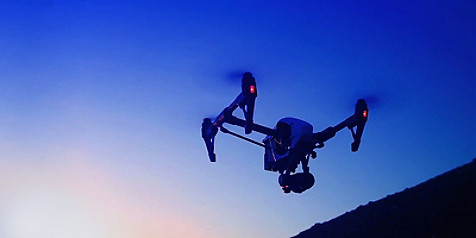What are insurance inspection drones?
Insurance inspection drones, otherwise known as unmanned aerial vehicles (UAVs), are drones used to take photos and capture other data in order to inform insurance risk assessments and claims. In the P&C insurance industry, for example, a property adjuster or risk engineer could use a drone to capture details of a location or building and obtain useful insights during claims processing or risk assessments. What was once seen as cutting edge is quickly becoming a mainstream technology. The Association of Unmanned Vehicle Systems International estimates sales of 125,000 units of unmanned vehicles (drones) in 2020. Commercial and personal-lines insurers that cover property risks have been early adopters of drone technology and, as a result, insurance inspection drone technology is beginning to change the way property adjusting is performed.
What are the business benefits of insurance inspection drones?
Insurance inspection drones provide many business benefits, including:
- Higher business efficiency: Between incidence of catastrophes, the limited availability of claims adjusters and the high number of claims, insurers face some tough challenges when it comes to managing the customer experience and settling claims in a timely manner. Because drones can cover large areas of property in a short span of time, the number of adjusters needed in the field can be reduced, removing the operational stress of employing and managing large numbers of claims adjusters.
- Faster claims adjudication: Thanks to their infrared cameras, drones are highly accurate when it comes to detecting potential water and air leaks, often a time-consuming process. Cognizant estimates this capability could save significant time while improving the productivity and efficiency of claims adjusters by up to 50%. In addition, field adjusters would have easy access to remote specialists, such as special investigation unit staff or total-loss professionals, who can view videos and photos that are transmitted in real time by insurance inspection drones. This moves the entire process forward and cuts cycle time, resulting in quicker claims resolution and happier customers.
- Improved safety: Claims adjudication can be dangerous, especially if an adjuster has to climb a ladder with a camera in one hand and a notepad in the other to inspect damage. It is also risky if an adjuster is operating in an area soon after a fire, flood, or earthquake. In contrast, insurance inspection drones’ ability to take high-resolution videos and photos of multistory buildings makes them a much safer option for insurers and their employees.
- Increased accuracy: Insurance inspection drones also enable adjusters to get very close to a roof, zoom in on questionable areas and analyze details to understand the cause of loss—all without disturbing the scene. This is beneficial when writing reports, as images and video gathered from insurance inspection drones can be easily integrated to present a fuller picture of any claim.

















